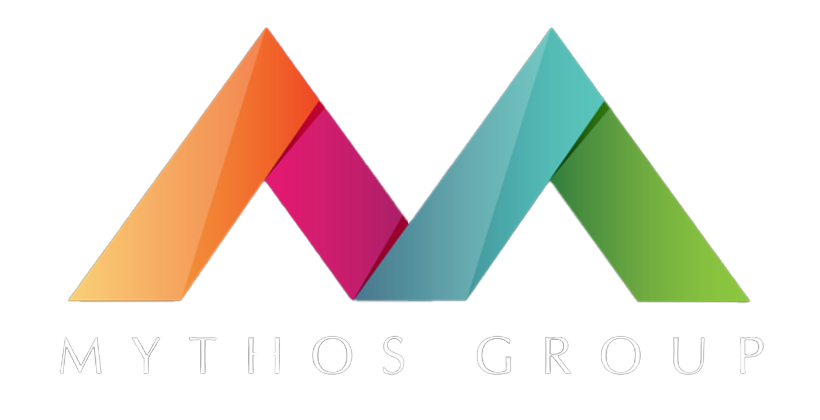There’s no denying that COVID-19 accelerated the corporate focus on workers’ wellness, and we now know that employee well-being is directly related to the overall health and success of any business. Pragmatically speaking, investing in employee wellness can produce measurable return on investment (ROI) in terms of reduced costs and increased profits, but it can also produce substantial value on investment (VOI) as well. VOI may include benefits such as higher employee morale, higher employee job satisfaction and better employee engagement. These are all just as important to an organization’s bottom line, but they’re not quite as easily calculated as dollars and cents.
If business leaders aren’t motivated by the positive outcomes and potential ROI and VOI from implementing wellness initiatives, they might be motivated by the negative consequences that can come from ignoring employee wellness. In 2022, Gallup found that 19% of workers in the U.S. rated their mental health as fair or poor. Over a 12-month period, the workers missed nearly 12 days of work compared with 2.5 days for workers who didn’t rate their mental health as fair or poor. Gallup estimated that the economic cost of this missed work, when generalized across the U.S. workforce, was $47.6 billion annually.
With those costs in mind, we can expect to see worker wellness continue to grow as a priority in 2023. Below are some of the specific wellness initiatives that we’re tracking for our clients.
Workplace Environment
Across all industries, employers are adopting a better understanding of how lighting, indoor air, and biophilic elements (like plants, green spaces and natural views) impact employee well-being and productivity. As a result, they are prioritizing those wellness-enhancing features en masse. In fact, we have reason to believe those features will trump the traditional food bars, sleep pods and social spaces that previously dominated work culture.
For example, Second Home, a co-working space in Hollywood touts itself as “LA’s healthiest workspace.” To claim that distinction, they created an outdoor campus that includes offices, meeting rooms, a shared workspace, event spaces and a restaurant, all set against the backdrop of 6,500 plants. Not only does this qualify Second Home as Los Angeles’s densest urban forest, but it also promotes a healthy, productive workspace by offering fresh filtered air, cultural education, guest speakers, flexible pricing options, parking, wellness events like yoga and sound baths, pet accommodations and complimentary organic coffee and tea service.
The El Segundo, California offices of EdTech company GoGuardian also offer mindful interiors with biophilic design that fosters collaboration and innovation. When entering their 35,000 sq. ft. headquarters, you’ll find modular pods, movable origami walls, thousands of plants and trees, and reflective signage that projects shadows of the company’s mission and values on the floor when the sun’s shining just right. Opportunities for collaborative or solo work are easily accessible with lighting and acoustics carefully planned for flexibility depending on need. In addition to creating a space that’s conducive to productivity and well-being, they intentionally and creatively steeped their vision, mission and values into every design element.
Burnout Reduction
Employees have been battling work-related stressors and burnout for years, but like it did for so many other work-related problems, the pandemic amplified the phenomenon. As we emerge on the other side, we can expect that businesses will have to continue to focus their efforts on combatting both work- and non-work-related sources of stress as part of their overall recovery strategies.
A Future Forum Pulse Report from the Fall of 2022 found that burnout is on the rise. Specifically, burnout increased 40% globally in the second quarter of 2022 with 43% of American desk workers reporting feelings of burnout. Female workers reported 32% more burnout than males with almost half of 18- to 29-year-olds saying they felt burned out as opposed to 38% of workers 30 and over. By the winter of 2022, 42% of global workers reported that they were experiencing work-related burnout.
There are many reasons that workers are stressed. Many companies are laying off workers in an effort to make their organizations as lean and efficient as possible. Fear of getting laid off, getting left with more responsibilities and more work when co-workers are laid off as well as lingering concerns about inflation, recession and COVID-19 are proving to be too much for workers to handle. However, there are ways to combat this growing amount of stress and to address the root cause of these stressors.
An article published by Fortune in April of 2023, argues that right now, preventing worker burnout should be one of the most important priorities for business leaders. Liz Fosslien, Head of Communications at the human resources company Humu, puts it this way, “People assume the primary driver of anxiety in the workplace is layoffs, and they certainly cause a lot of concern,” but, she continues, “We’ve done research at Humu that shows the biggest driver of anxiety is a complete lack of direction. One key piece of supporting employees during times of uncertainty is to provide clarity where you can.”
When an airplane experiences turbulence while in the air, nervous fliers will look to the flight attendants to gauge the severity of the situation. If the flight attendants are calmly taking drink orders and passing out snacks, there’s probably nothing to worry about. However, if the flight attendants appear to be stressed, a passenger might take from that they are indeed in danger. I think this is a useful example for business leaders in turbulent times. Tellingly, Gallup found that in most cases of worker burnout, a good manager was missing from the equation.
It’s not enough to implement policies aimed at preventing burnout. Leadership and management at all levels need to exemplify healthy behaviors in the workplace and communicate openly with their employees about the challenges that the organization is going through and what their plans are to address these challenges. Communication, empathy and understanding can go a very long way to reducing the stress that causes burnout. Check in with your workers, and as always, offer them praise when they succeed and support when they fail. A steady hand at the wheel is ultimately what creates a smooth ride.
Mental Wellness
With the pandemic exacerbating many mental health concerns, employers have begun implementing holistic wellness practices. In 2023, we will continue to see a growing focus on compensation and benefits, paid leave, leadership styles and wider organizational cultural changes affecting work-life balance. Research shows that around 20% of adults have experienced some type of mental illness, and it’s not an isolated issue. Mental illness is closely tied to physical health problems such as diabetes and heart disease, sleep issues, and addiction or substance abuse disorders.
To support employee well-being, employers must commit to being flexible and imaginative. When there is such a diverse array of needs (stemming from employees’ diverse backgrounds and circumstances), companies must prepare to launch many different types of support that ensure mental wellness and well-being for their workforce. When working with a client, we suggest two main ways to improve the mental health of their workforce. The first of which is to make sure they provide access to mental health treatment.
Over half of adults with mental illness don’t ever receive treatment and 11% of people with mental illness can’t afford treatment because they are uninsured. Employers should consider adding mental health treatment to benefits if they haven’t done so already. It’s absolutely necessary that your employees can get treatment for mental health issues when they arise. Employee assistance plans and employee resource groups can offer valuable support as well.
Microsoft, for example, launched a program called Microsoft CARES. Microsoft CARES is an employee assistance program that was designed to offer employees resources for stress management, parenting, caregiving, marital support, grief counseling, behavioral and emotional support and professional referrals. This initiative comes with 24/7 live support for employees in crisis and it also offers in-person counseling at their Living Well Health Center. Costs are kept low and copays are transparent so that there are never any nasty billing surprises.
Another great example is Johnson & Johnson’s Mental Health Diplomats Employee Resource Group (ERG). This ERG is a place that encourages employees to gather to share their stories of mental health challenges and triumphs. These ERGs function as a safe space where employees can find support and information. Any employer can benefit from setting up an ERG for their workers. According to a recent article on Future Forum, 90% of Fortune 500 companies have ERGs. Even if ERGs are not specifically dedicated to mental health issues, their presence alone tends to increase well-being by focusing on traditionally marginalized topics such as sexual orientation, gender identity, religion, race and disability.
If you’re looking to prioritize employee wellness at your organization, contact us. We work with senior executives in all industries to co-create employee wellness programs and implement strategic transformations that are tailor made to help you achieve your specific business goals.







